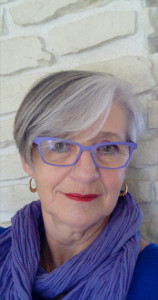
Discover the contemporary work of A.Pontesta

Guideline history
Agustín Pontesta (San Sebastián, 1963) stands out for an intense career both in life and in art. From a very early age the need to express himself through painting awakens within him, but it will be He went hand in hand with the artist Alfredo Bikondoa, when he saw his vocation clear. Since then he has not stopped working and evolving in parallel with a particular and genuine way of understanding the world and what surrounds him.
At the same time, he discovered and became interested in Zen Buddhism and its philosophy. For years he attends intensive seminars and retreats. He also learned about Tibetan Buddhism through various lamas, participating in courses and retreats. Attend conventions given by the Dalai Lama himself, traveling to France, India... During this time he studies and practices oriental art, Sumi-e, Japanese calligraphy.
He has resided in London for some time, motivated by Victorian painting, especially the work of the painter William Turner. In San Sebastián he has worked as a drawing and painting teacher.
A lover of open spaces and remote places, a reader since he was a child of books about classic travelers and explorers, Agustín fulfills his dreams by taking trips lasting several months and even a year. , always alone and with a one-way ticket, leaving improvisation as the axis of his travels, he has been to remote places on the planet such as the Amazon jungle, the Andes, deserts such as the Atacama in Chile, the Thar in India , Turkey, Jordan or Israel, the large expanses of Patagonia, Tierra del Fuego, the Himalayas (base camps of Everest, Annapurna...)...
He has walked the Camino de Santiago several times in almost all the known variants on the peninsula in its entirety and without interruption, one of them walking for two months round trip.
Agustín Pontesta is a person with concerns who has adopted alternative ways compared to a conventional social system. Without a doubt this vital itinerary, this introspective and at the same time open look at the world in some way reinforces and is impregnated in his artistic work, appreciating the interiorization of landscapes bathed with a latent spirituality.
Its infinite landscapes, where the horizons seem absent or blurred with an undefined sky, masses of people who are confused with a difficult and extreme terrain. Some of his works sometimes seem to have apocalyptic airs, other times the textures and reliefs hint at rocks that remind us of seabeds. Particular universes. Art and science join forces.
In his biography there are many awards from various contests and competitions spread throughout the peninsula.
ARTIST STATEMENT
Heraclitus said: “The most beautiful order in the world remains a chance meeting of things insignificant in themselves. themselves.
In art “The theory of chaos” It points in a direction parallel to science. In the practice of creating I take chance as a reference, as a teacher to follow, from an apparent chaos and that is the direction in which my effort points to contact that secret ingredient of the universe that we call spirit.
The recurring themes are those that I am passionate about: nature, science, astronomy... In my works I do not limit myself to a simple reproduction. In the privacy of my studio I make my own paintings with pigments, binders and mix them with different materials to experiment and cause accidents on the canvas, which in a horizontal position natural phenomena emerge, using chance as an ally, &ldquo "Like a small Greek god I created worlds, universes, planets...and also life, the life that as an artist I bestow in each brushstroke in the practice of painting."
When I paint landscapes, these are not exactly idyllic or friendly, they are extreme, hard, cold, wild settings, places that seem to isolate the man who becomes small before immense horizons, other times they are masses of people who seem to be walking towards a dramatic destiny. There is something apocalyptic but bathed in beauty.
Many of my creations are made on supports of wood fragmented into pieces to recompose them, it is like an allusion to creation from destruction. Cracks and holes appear in the paintings, they are voids that acquire special prominence. When I work on my paintings I can sometimes resort to different techniques such as dripping painting, expressionism, collage… but in the last phase I resort to precise and delicate brushstrokes that unify the work.
For me, in painting and when I take long solo trips, they have something in common, they are like “retreats.” But withdrawal does not mean a desire to flee, contempt for the outside world and human beings, nor does it mean exasperated loneliness. The retreat is rather heading towards the encounter of the simple and basic, it is going to the encounter of a primordial spirit that calls out to our deepest interior and that in current times, more than ever we have forgotten. or covered.
As an artist I use feelings that the experience of my travels around the world have left me. With abundant blues I capture the imprint that was left inside me in the presence of a mountain, a lake or a rock, a starry sky, a storm.
“I create landscapes or scenarios that do not exist, a universe with millions of stars that do not exist, deep and mysterious seabeds that emerge in front of me. So I create my particular cosmos. The “cosmos&rdquo from the infinitely small to the infinitely large, and both seem to arise from the same equation. And I am part of it. I have a beautiful interior emptiness, I am interested in it being empty. "empty because in that way everything fits without anything remaining, I am one with that Everything, with a unity, and I can delight in the melody that the wind produces."
The artistic work of A.Pontesta
Newly added works
Mixed technique (acrylic)

















































































